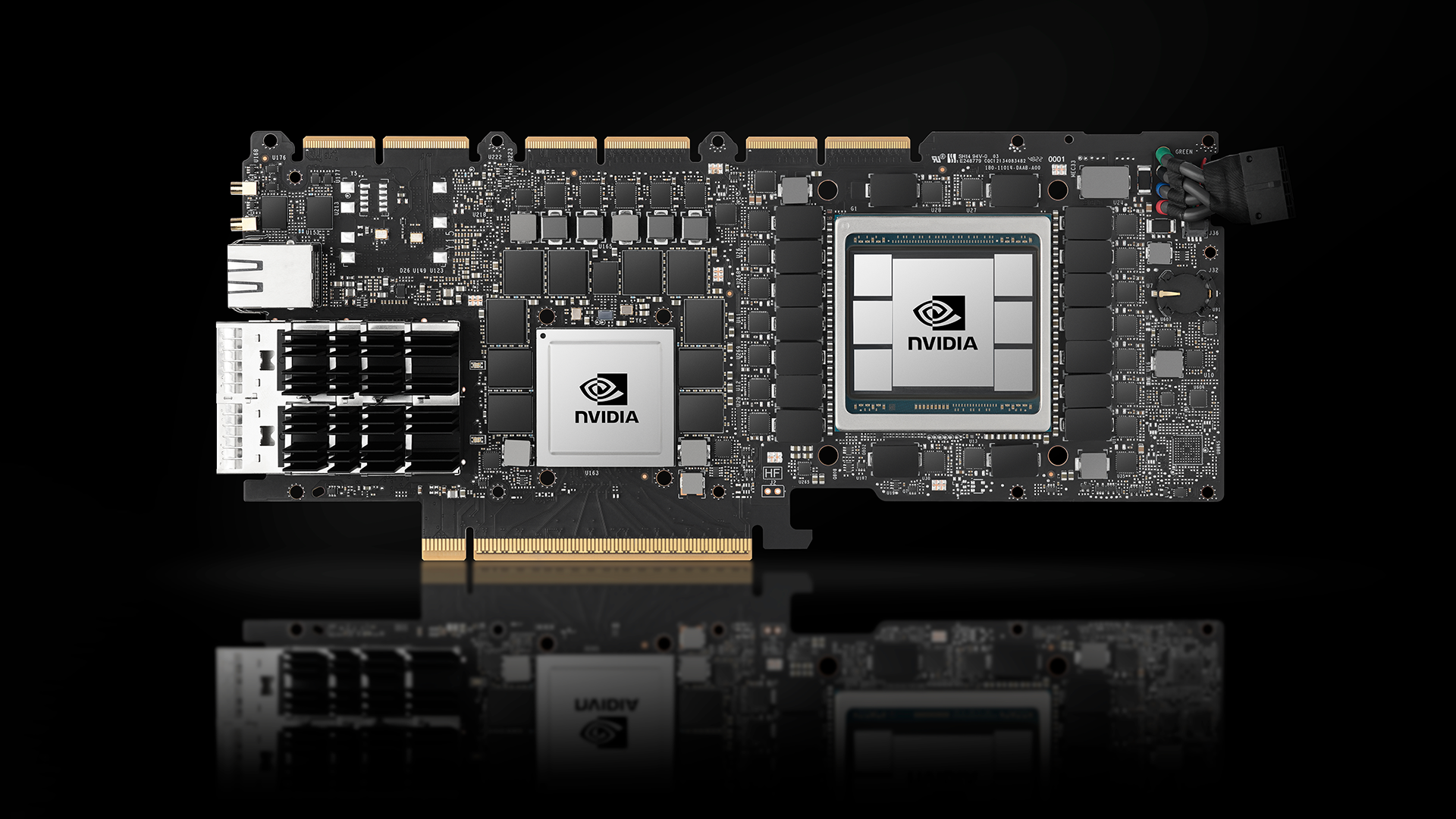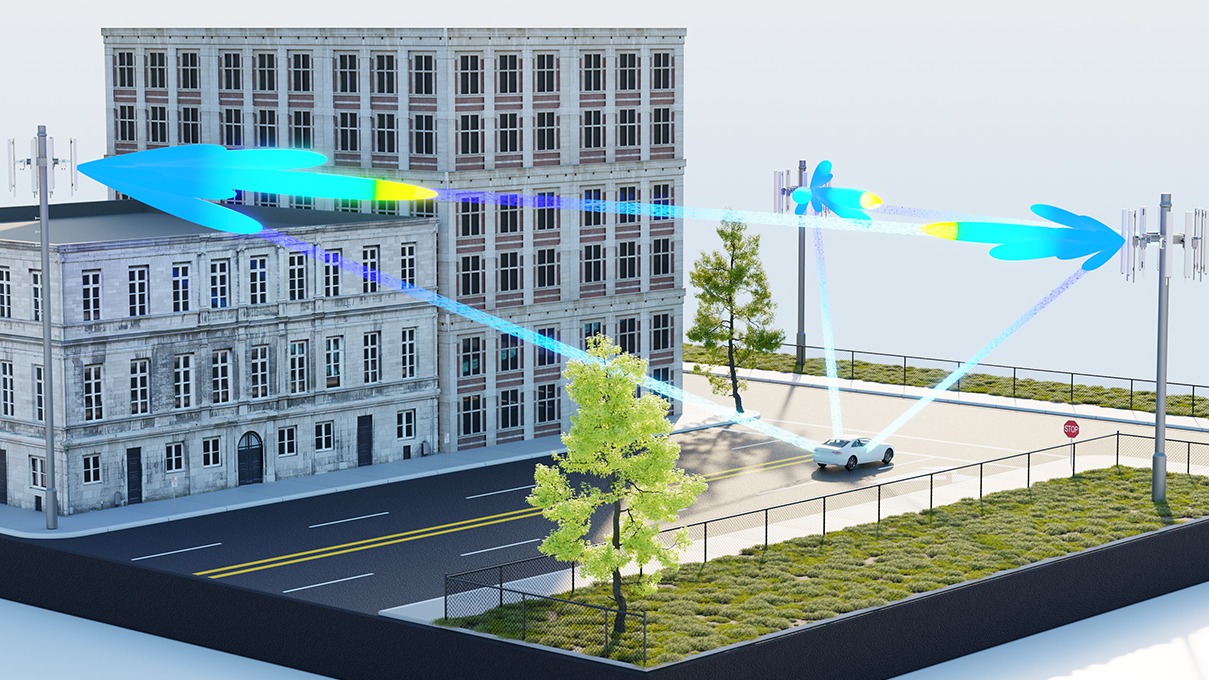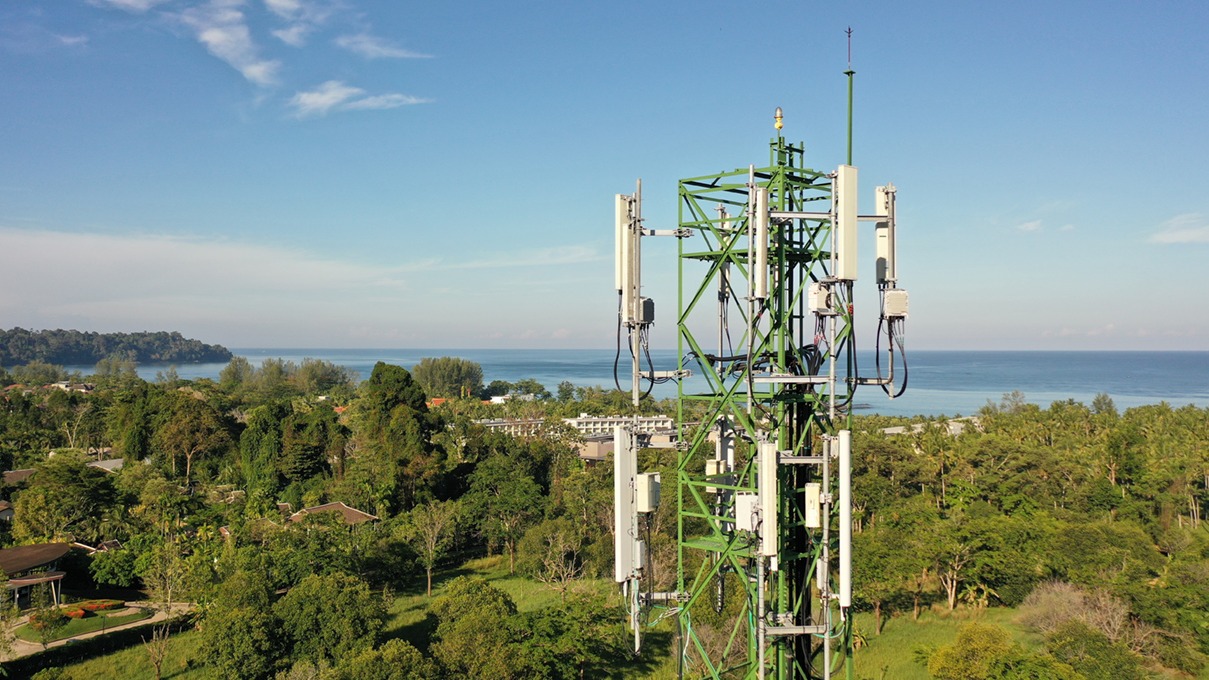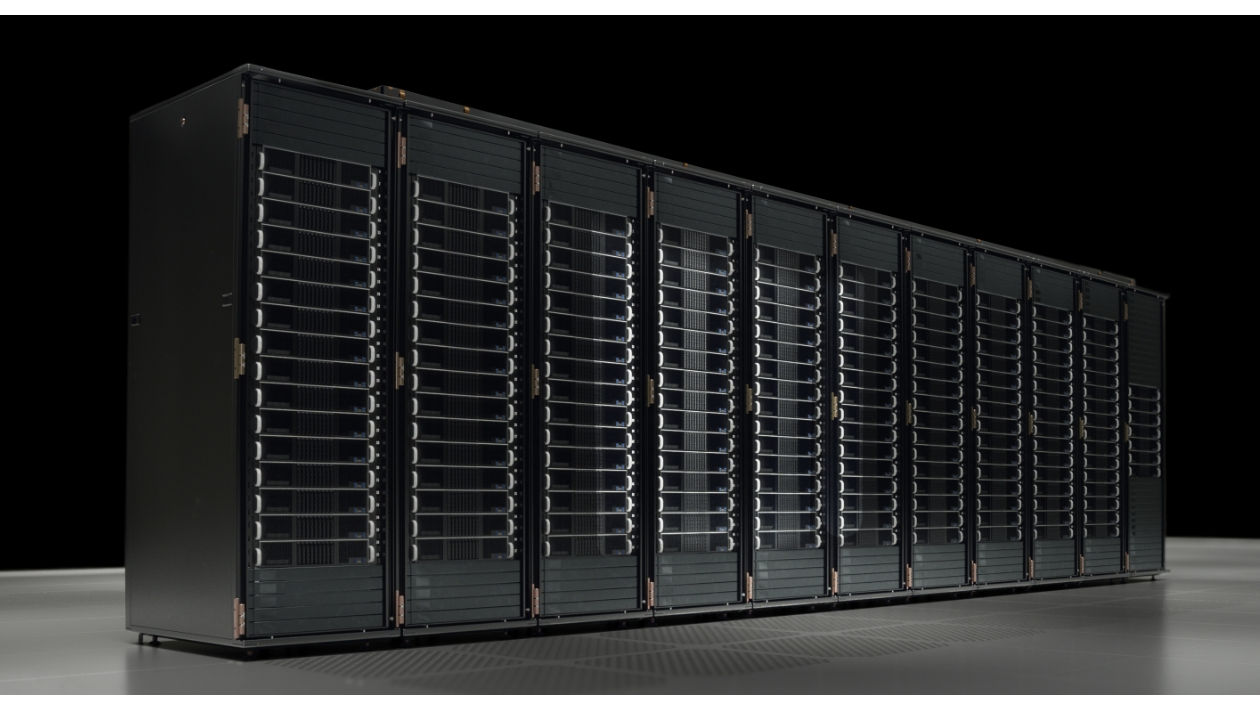This post was originally published on the Mellanox blog.
Wireless carriers have been hyping the next-generation cellular technology of 5G for years but the reality of it is certain to start rolling out this year. Wireless networks are always evolving. but this is more than a cellular upgrade. 5G not only increases speeds but offers enhancements in latency. This vastly improves responsiveness, which opens up new capabilities in wireless technology, such as offing a replacement for traditional home internet service, a boost to self-driving cars, and new possibilities for the Internet of Things (IoT).
Key market trends driving 5G technology adoption
The demand is for gigabyte-per-second mobile device performance that dramatically changes how people work and interact in the cloud. 5G is expected to deliver significantly enhanced performance compared to 4G LTE. This includes infinite connectivity, higher bandwidth, lower latency, increased reliability, and faster mobility. The following key technologies are driving the performance requirements:
- Self-driving cars and mission-critical virtual healthcare services that require ultra-reliable, high-bandwidth, and low-latency communications.
- IoT and machine communications for smart factories, smart homes, and smart communities that exponentially increase the number of internet connections.
- Emergent technologies such as artificial intelligence, virtual reality (VR), augmented reality (AR), and drones that change the way humans interact with machines and with each other. For people that are thinking that drone-based services aren’t a reality, Chinese online retailer JD.com today delivers shopping packages using drones in mainland China.
- Continued massive growth in video traffic requiring increased network efficiency, faster performance, and improved network latencies.
Analysts predict that service providers can quickly monetize new 5G services in areas such as consumer-based media and entertainment, self-driving cars, smart cities, healthcare, and automated factories.
When to expect 5G services
After years of talking about 5G, telecom carriers most influential players are starting to roll out 5G services. According to Fierce Wireless, analyst firm CCS Insights now expects that 5G connections will approach 280 million by 2021—a 25% rise from their October 2017 forecast. Further, it is predicted that 1 billion mark in terms of 5G connections will be established in mid-2023, and 2.7 billion by 2025 (that’s one of third of the world’s population!).
F5 Networks recently announced several new solutions and enhancements designed to allow service providers to launch 5G services. Included are improvements to their network functions virtualization (NFV) offering that enable the optimization and scale of existing 4G LTE and new 5G networks. These F5 solutions are powered by high performance networking based on NVIDIA Ethernet technology, including 100G network adapters, switches, and cables.
How F5 ensures a successful move to 5G
Although the an operator’s transition to 5G network seems like a giant leap, the good news is that many of the F5 solutions and technologies that support 5G capabilities are already well-defined and in use by service providers and enterprise organizations around the globe. Thankfully, many of the F5 NFV solutions can be used to optimize and help secure your existing 4G LTE networks:
- Network functions virtualization (NFV)
- L4-L7 network services consolidation
- Multi-access edge computing (MEC)
- Automation and orchestration
- Network slicing
- GPRS Tunneling Protocol (GTP) security
- IoT solutions for the access network and data center
- DDoS solutions in the access network, data center, and cloud
- Intrusion prevention systems (IPS)
- Web application firewalls (WAF)
- Load balancers and application traffic managers
Getting 5G capabilities up and running as quickly as possible helps operators to maintain their competitive edge and secure new 5G service revenues. At the same time, operators must maintain and optimize existing 4G LTE networks for their customer base. Hence, F5 believes it is critical to follow three key imperatives to succeed while transitioning to 5G:
- Optimize your network: Simplify and scale your existing 4G LTE network while transitioning to 5G, leveraging high-performance virtualized software solutions.
- Secure your platform: Protect your 5G network at massive scale at every layer and for multiple threats.
- Monetize new solutions: Accelerate the time to market of new, compelling, and differentiated 5G services to your enterprise customers and consumer base.
Delivering a high performance and efficient network is important for enabling all the essentials of providing a 5G network at scale.
Cloud-based technologies to meet 5G network demands
With the rapid transition to high performance virtualized and cloud-based edge, core, and data networks, service providers can scale and simplify their existing 4G LTE network and evolve to 5G with high-performance virtualized software solutions from F5.
- Simplify core network architecture and operations.
- Reduce costs with the integration of L4-L7 network services into a single platform, deployable as hardware and virtual appliances.
- Migrate seamlessly to a NFV infrastructure using a broad range of virtual network functions (VNFs) and a VNF manager.
- Meet 5G’s latency and high throughput requirements with MEC solutions.
- Support transition from 4G to 5G and services migration.
- Use automation and orchestration tools to simplify operations and improve efficiency.
- Transition from CapEx to OpEx consumption models with subscription-based licensing models.
Virtualized cloud-based technologies save the day!
While virtualization and cloud-based technologies improve the scalability, agility, and operational simplicity, they also impose significant performance penalties by using host CPU cycles for processing networking traffic. This problem becomes more critical as bandwidth increases to 25/40/50/100 and 200Gb/s, which drives higher CPU consumption and leads to server proliferation.
To solve this challenge, higher performance and increased throughput is enabled through F5’s BIG-IP Virtual Edition support of the flagship NVIDIA ConnectX family of SmartNIC adapters, including 100Gb Ethernet and DPDK drivers. Working together, NVIDIA and F5 provide a solution that boosts data plane performance to near line rate using optimized DPDK drivers that reduce the overhead associated with processing packets. NVIDIA network adapters significantly improve the performance of the entire F5 BIG-IP VNF Portfolio to near line rate of 100Gbps throughput.
The ConnectX family of network adapters with 200/100/50/25/10GbE speeds and networking offload engines are purpose-built to meet the extreme networking bandwidth required for an 5G infrastructure upgrade and services. With multiple times the performance packed into the same infrastructure footprint, service providers working with F5 and NVIDIA can quickly reap the benefits of new 5G services to maximize the return on their 5G network build-out.
NVIDIA DPDK technology
The NVIDIA Data Plane Development Kit (DPDK) is a software-acceleration technique consisting of a set of software libraries and drivers that reduces CPU overhead caused by interrupts sent each time a new packet arrives for processing. DPDK implements a polling process for new packets and the key benefits of significantly improving processing performance while eliminating PCI overhead and maintaining hardware independence.
Although DPDK technology consumes some CPU cycles, ConnectX-5 Intelligent NICs offer the industry’s highest bare metal packet rate of 148 million packets per second for running cloud applications such as VNFs over DPDK. NVIDIA is an active participant and leads the DPDK software community in driving innovation.
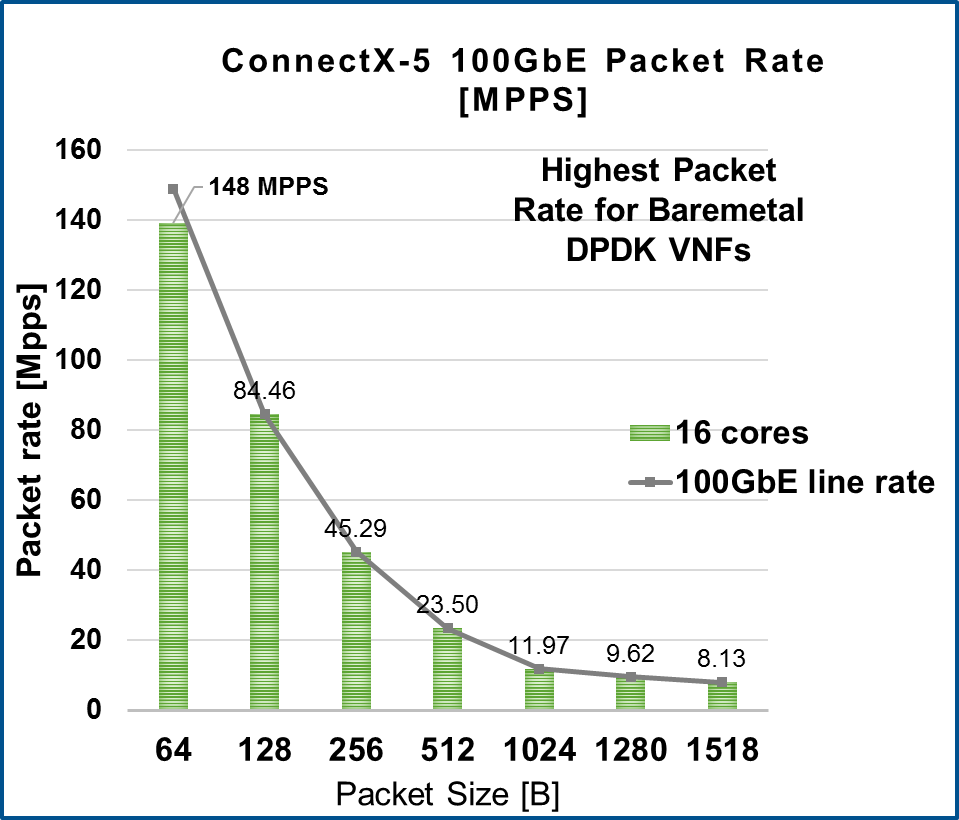
Mobile World Congress 2019 demo
In the technology world, seeing is believing. F5 and NVIDIA put together a demo that shows a 400-Gbps high performance and ultra-high density Ethernet fabric in a single rack that portrays the scale and performance needed for 5G network infrastructure. Several BIG IP VNFs including traffic management, DDoS, firewall, load balancers, and so on, perform respective L4-L7 network services at a massive scale over this high-performance Ethernet fabric to manage real-world 5G traffic.
Figure 2 shows the setup and configuration.
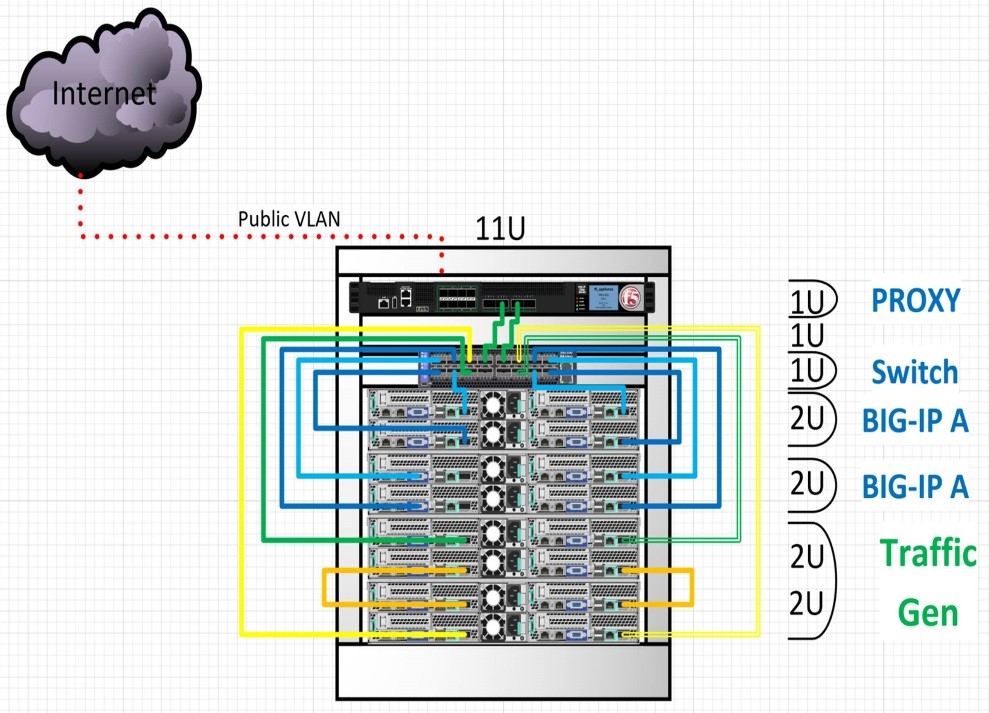
The focus of this demo is on using commercial off-the-shelf (COTS) hardware running BIG-IP VE with NVIDIA NICs and switches to achieve 100G+ throughput in an ultra-high, high-density solution that is available for purchase today. F5, along with NVIDIA, are demonstrating real-world performance of a qualified and certified commercially available solution that demonstrates the following:
- Two servers with two dual-port 100Gb ConnectX-5 SmartNICs for traffic generation
- NVIDIA Spectrum SN2010 and SN2100 Ethernet switches delivering line rate throughput, with zero packet loss
- Two servers with dual-port 100Gb ConnectX-5 SmartNICs for high availability capable of taking tremendous loads and fending off attacks
- Performance of 400G – 15% using DPDK driver = 340Gbps throughput by bonding multiple NVIDIA 100Gb NICs
Summary
By accelerating DPDK packet processing service, you can scale and simplify your existing 4G LTE network and help with a smooth transition to 5G.
For more information about how NVIDIA and F5 are addressing security concerns in the Linux kernel layer, watch the joint GTC 2021 session, kTLS Hardware Offload Performance Benchmarking for NGINX Web Server. The session demonstrates the significant performance gains achievable by offloading kTLS operations to the NVIDIA ConnectX-6 Dx SmartNIC.

